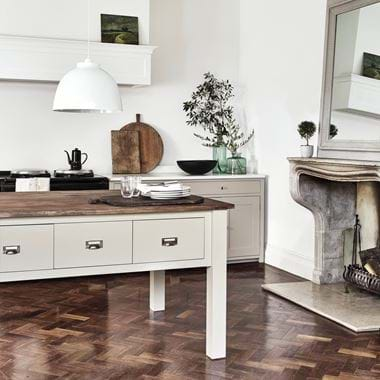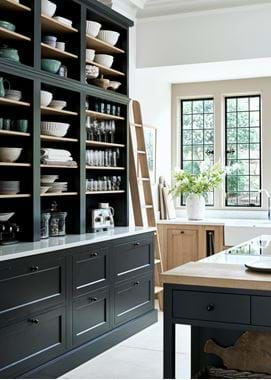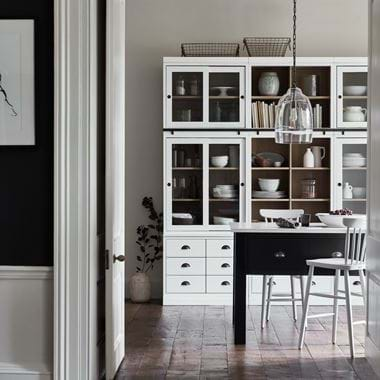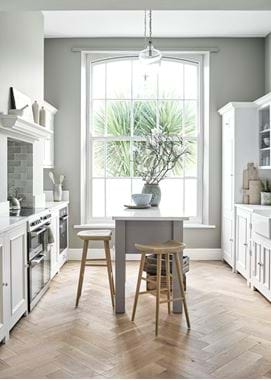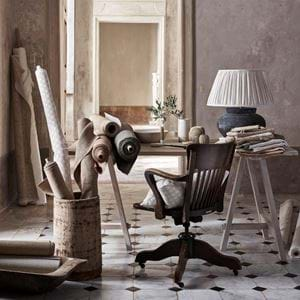Kitchens through time – part one
Kitchens through time – part one
For a kitchen to feel truly comfortable in a home, it needs to work with the architecture of the space, respecting the features for a harmonious result. So, we’ve pulled together some ways you can craft a beautiful kitchen while staying true to your home’s history – in this first part we’ll be looking at period properties from the Georgian to the Edwardian eras.
Georgian
If you’re lucky enough to live in a Georgian home, we’d recommend trying to capture the elegance this period is known for by focusing on symmetry and grand proportions. A sense of light and space is also important in your modern interpretation of the Georgian kitchen - they loved balance and harmony and paid particular attention to the hidden details and craftsmanship in hinges and dovetail joints (something we’re fairly familiar with, too). Kitchen cabinets and walls were often hand painted in pale shades with a matt finish - our Powder Blue, Lily or Old Chalk shades work well. An ornate cooker hood (our Suffolk one is a good example), will echo the grand detailing of the period, while neat, oval, burnished brass cabinet handles, reflect the focus on simple elegance.
It’s also worth noting that a traditional Georgian kitchen would’ve been in the basement, the domain of servants, but that, since then, many have been reconfigured to sit on the ground floor, more conveniently close to the living spaces (something you might want to consider if yours is still in the basement).
Victorian
Much as today, the range cooker was the focus of the Victorian kitchen, with the rest of the space usually divided into sections – a food prep area, the scullery where the sink was housed, and a cool larder. For a modern interpretation, you could consider a large larder with its cavernous storage space and cool marble shelf, and a ceramic double-bowl butler’s sink. Another Victorian trait that’s passed on to today’s kitchen is the central wooden table. This was where food prep took place, and the family (or servants in larger properties) ate. Usually made of pine, it was scrubbed clean with sand, soda and water giving it the distinct matt finish we still appreciate today. And of course, the dresser was also a key element of the Victorian kitchen. With this period’s classic high ceilings, they could reach up to seven foot. You could create a similar effect with a combination of cabinets, reaching as high as your ceilings allow. And for those final touches, consider cast iron radiators as a feature and lots of copper pans on display.
Edwardian
Edwardian architecture tends to be airy and roomier than its Victorian predecessors – spaces are slightly wider with similarly high ceilings, coupled with intricate patterns on floors and architrave. Unlike the darker shades favoured by the Victorians, Edwardian kitchens tend to be fresh and white (there was a new focus on hygiene during this period) so go for pale and airy colours on cabinets and walls (our Snow and Salt shades of white would work well). Glass-fronted cabinets became popular during this period so you could include glazed wall cabinets from the Chichester, Suffolk or Henley collections.
Post-war homes, mid-century spaces, contemporary designs and country cottages: you’ll find them all in part two, here.

